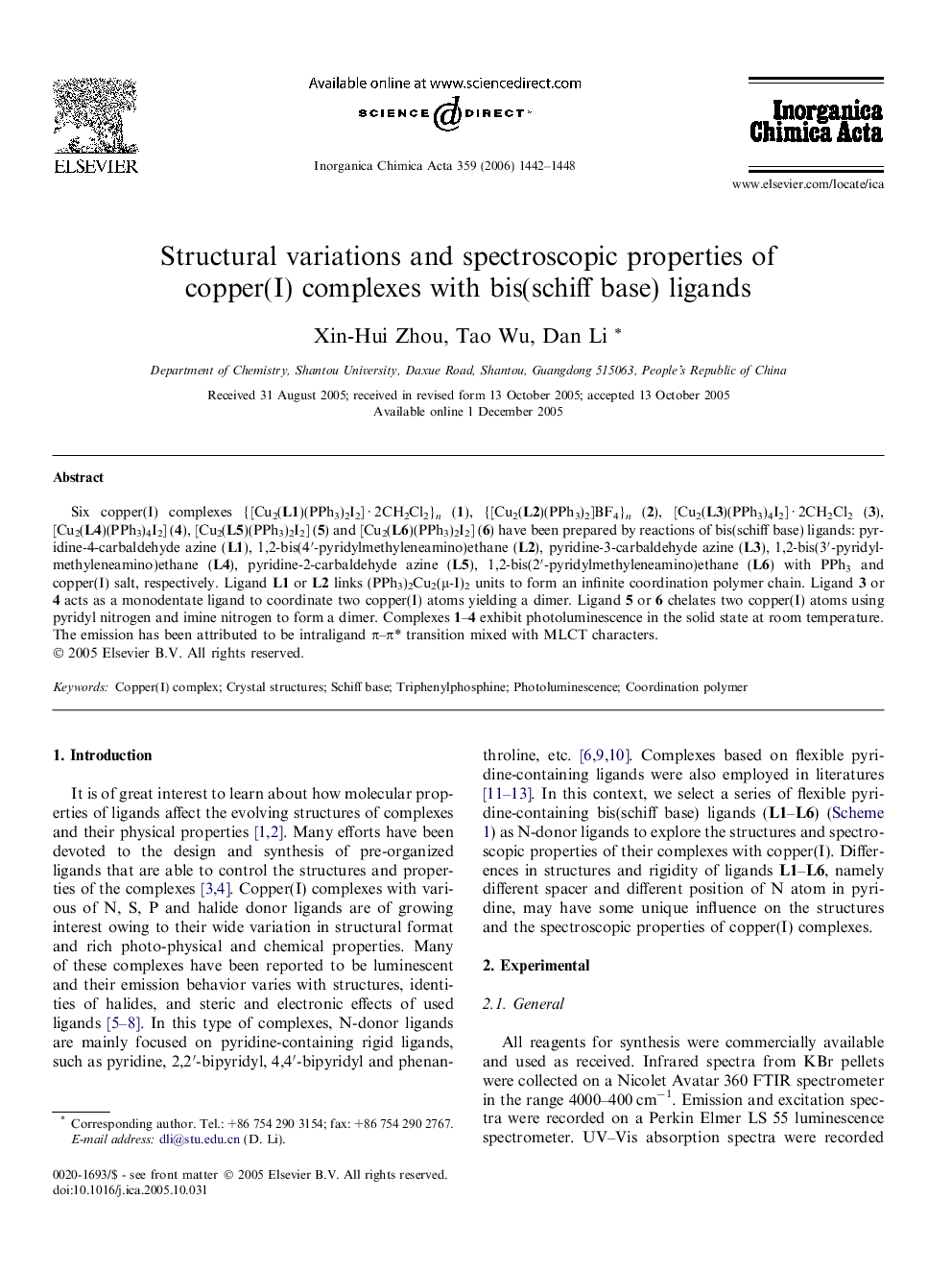| Article ID | Journal | Published Year | Pages | File Type |
|---|---|---|---|---|
| 1313078 | Inorganica Chimica Acta | 2006 | 7 Pages |
Six copper(I) complexes {[Cu2(L1)(PPh3)2I2] · 2CH2Cl2}n (1), {[Cu2(L2)(PPh3)2]BF4}n (2), [Cu2(L3)(PPh3)4I2] · 2CH2Cl2 (3), [Cu2(L4)(PPh3)4I2] (4), [Cu2(L5)(PPh3)2I2] (5) and [Cu2(L6)(PPh3)2I2] (6) have been prepared by reactions of bis(schiff base) ligands: pyridine-4-carbaldehyde azine (L1), 1,2-bis(4′-pyridylmethyleneamino)ethane (L2), pyridine-3-carbaldehyde azine (L3), 1,2-bis(3′-pyridylmethyleneamino)ethane (L4), pyridine-2-carbaldehyde azine (L5), 1,2-bis(2′-pyridylmethyleneamino)ethane (L6) with PPh3 and copper(I) salt, respectively. Ligand L1 or L2 links (PPh3)2Cu2(μ-I)2 units to form an infinite coordination polymer chain. Ligand 3 or 4 acts as a monodentate ligand to coordinate two copper(I) atoms yielding a dimer. Ligand 5 or 6 chelates two copper(I) atoms using pyridyl nitrogen and imine nitrogen to form a dimer. Complexes 1–4 exhibit photoluminescence in the solid state at room temperature. The emission has been attributed to be intraligand π–π* transition mixed with MLCT characters.
Graphical abstractSystematic experiments have been implemented using different pyridine-containing bis(schiff base) ligands to synthesize a series of mixed-ligand copper(I) complexes in examining the influence of ligands on the structures and spectroscopic properties of the complexes. The complexes show solid state photoluminescence at room temperature.Figure optionsDownload full-size imageDownload as PowerPoint slide
